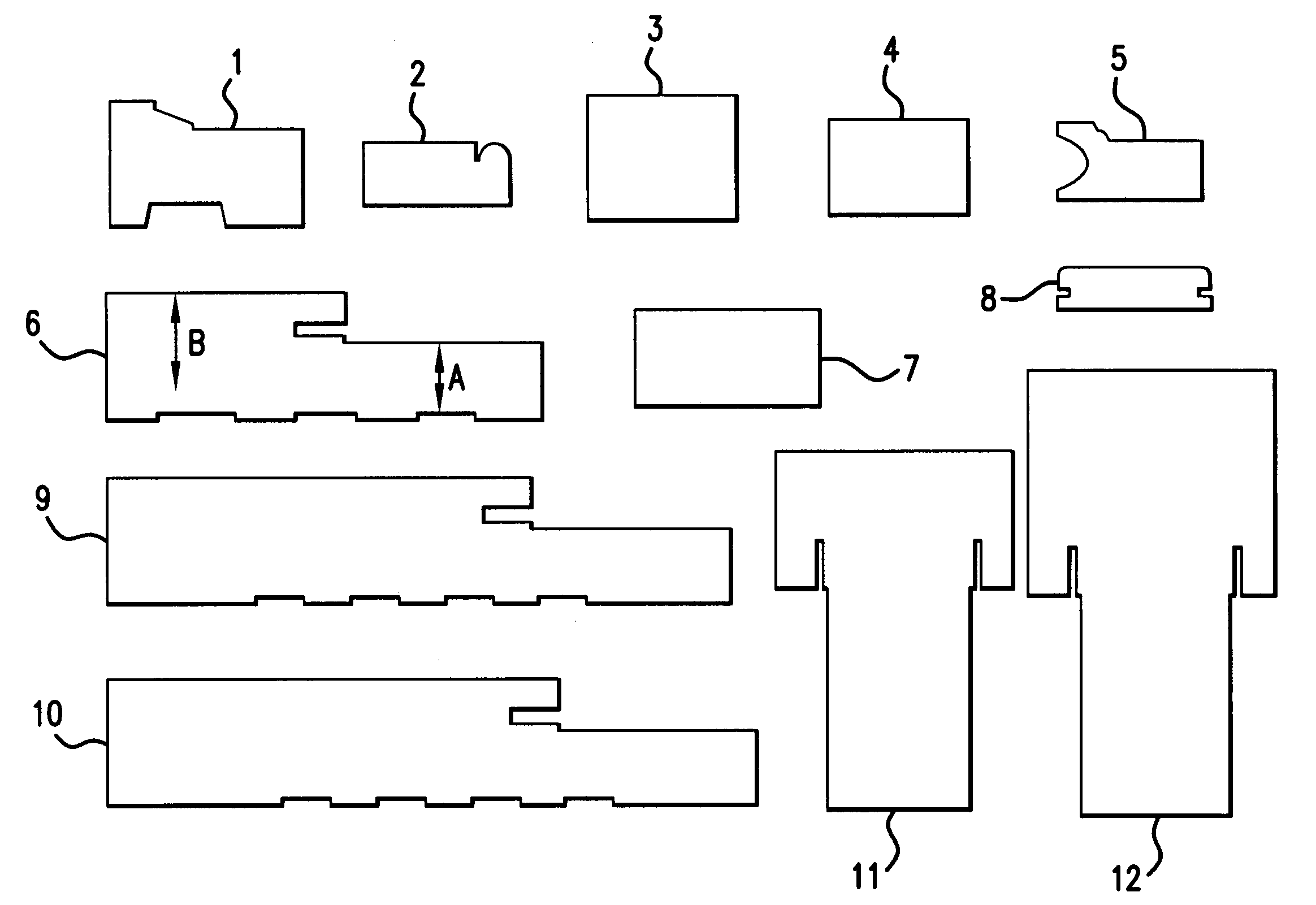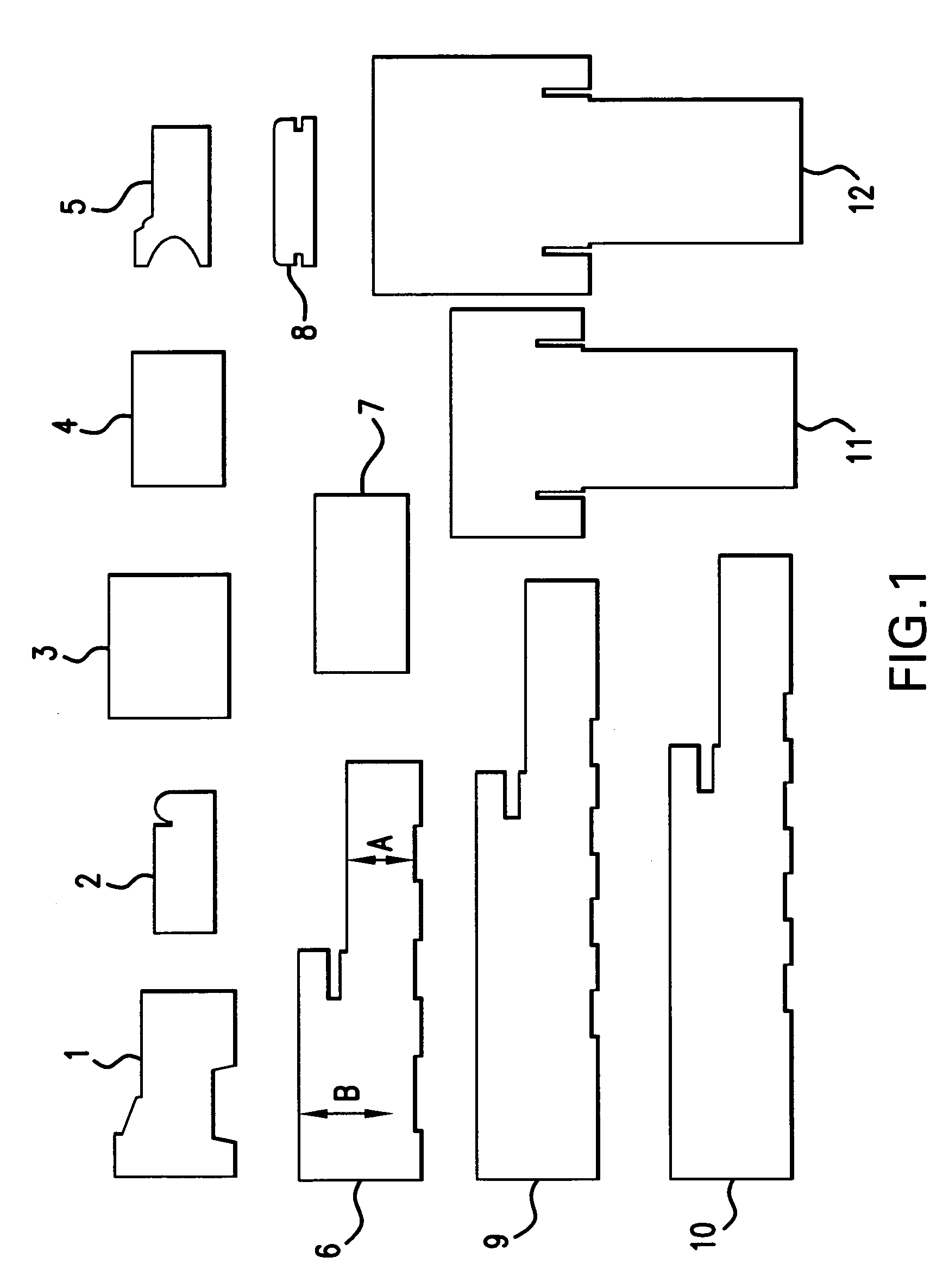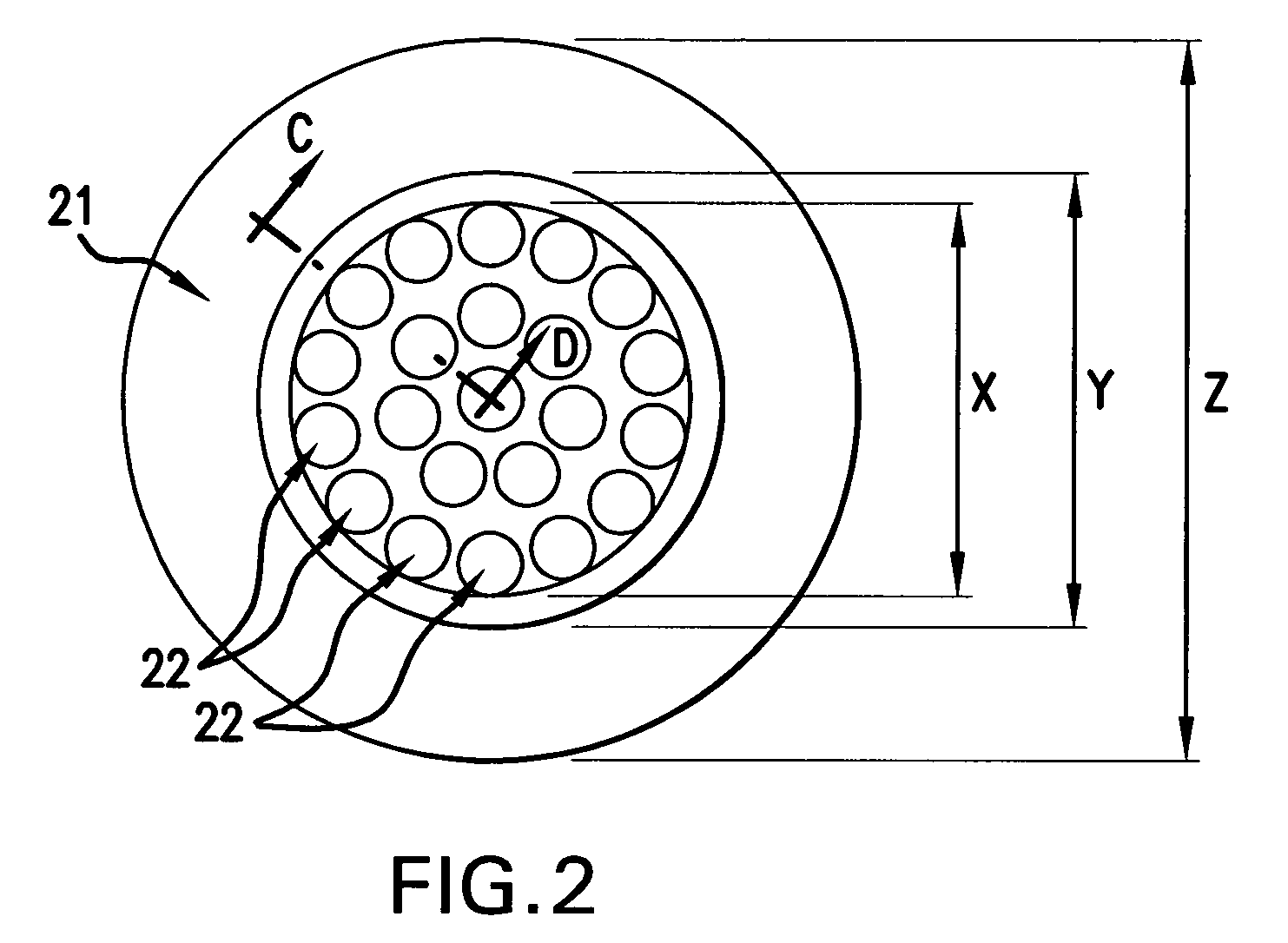Polymer wood composite material and method of making same
- Summary
- Abstract
- Description
- Claims
- Application Information
AI Technical Summary
Benefits of technology
Problems solved by technology
Method used
Image
Examples
examples
[0037] Specific preferred embodiments of the invention will now be described with reference to the following examples, which should be regarded in an illustrative rather than a restrictive sense. That is, the composite material and method of the present invention should not be limited to the following exemplary embodiments.
[0038] First, an extrudable mixture was formed by mixing together the following components listed below in Table 1 (wherein all known equivalent commercial grades of the items listed below may be used in accordance with the invention):
TABLE 1Preferred Range ofUsage Level, phr (inUsage Level,reference to polymericBatch Size,ItemsProduct CodeGeneral Termphr(PVC) resin)lb1F 614PVC Resin100100156.262XAB 5Tin Stabilizer1.80.5-3.02.813DINPPlasticizer31.0-4.04.694S330Coupling Agent10.5-3.01.565232AFoaming Agent2.50.8-2.53.916P551Processing Aid (high6 3-8.09.38molecular weight)7P530Processing Aid (high7 3-8.010.94molecular weight)8K175Processing Aid (low20.5-3.03.13m...
PUM
| Property | Measurement | Unit |
|---|---|---|
| water absorption | aaaaa | aaaaa |
| weight percent | aaaaa | aaaaa |
| temperature | aaaaa | aaaaa |
Abstract
Description
Claims
Application Information
 Login to View More
Login to View More - R&D
- Intellectual Property
- Life Sciences
- Materials
- Tech Scout
- Unparalleled Data Quality
- Higher Quality Content
- 60% Fewer Hallucinations
Browse by: Latest US Patents, China's latest patents, Technical Efficacy Thesaurus, Application Domain, Technology Topic, Popular Technical Reports.
© 2025 PatSnap. All rights reserved.Legal|Privacy policy|Modern Slavery Act Transparency Statement|Sitemap|About US| Contact US: help@patsnap.com



